Regional councils collect information about how much water is available and manage resource consents for those wishing to take water from groundwater supplies. Use the buttons below to view regional information on: how much water is available, where it comes from and how its used.
{{illustrationHeading}}
{{waterUsage.irrigationLabel}} Industrial
{{waterUsage.industrialLabel}} Stock
{{waterUsage.stockLabel}} Hydroelectrical
{{waterUsage.hydroLabel}} Town supply
{{waterUsage.drinkingLabel}}
-
Groundwater in this zoneShow Hide
Groundwater in this zone
Accurately estimating the total amount of water available in a groundwater management zone is not currently possible. Regional Councils are working with the Ministry for the Environment on the best way to calculate this figure. We will include these figures on LAWA when they become available. In the meantime, for more information about a particular groundwater management zone, contact your regional council.
Total allocation is calculated as Daily Max Volume over 100 days for irrigation takes and Max Daily Volume over 365 days for all other uses. Estimated Annual Allocated Volume (EAAV) is calculated to determine a conservative maximum usage that may occur in a dry year and assumes that (1) for consents authorising abstraction during the irrigation season the EAAV can be calculated by assuming that, on average over a year, water is used for 100 days at 80% of the maximum consented daily abstraction rate; and (2) for consents for full year abstractions, the EAAV can be calculated by assuming that, over a year, water is used for 365 days a year at 50% of the maximum volume.
-
Water consents: How much water is consented and used?
Groundwater available to consent
Show HideConsented water in this groundwater zone
Use the tables below to look at how much water is available compared with how much is actually consented within this water management zone. Click the plus to expand subzones where available
{{item.zoneId}}
Comparing consents and use
Amount available to consent In this groundwater management zone:
{{item.data.totalAvailableAmount}} {{item.data.totalAvailableUnits}}
available to consent
Amount consented
measured and non measuredAmount used (measured) Amount Units Consented or used as a percentage of available Total available to consent {{item.data.totalAvailableAmount}} {{item.data.totalAvailableAmount}} {{item.data.totalAvailableUnits}} Total consented {{item.data.totalConsented.amount}} {{item.data.totalConsented.amount}} {{item.data.totalAvailableUnits}} {{item.data.totalConsented.percentText}} Total consented and measured {{item.data.totalMeasured.amount}} {{item.data.totalMeasured.amount}} {{item.data.totalAvailableUnits}} {{item.data.totalMeasured.percentText}} Total measured amount used {{item.data.totalAmountUsed.amount}} {{item.data.totalAvailableUnits}} {{item.data.totalAmountUsed.percentText}} Total measured volume used {{item.data.totalAnnualVolumeUsed}} {{item.data.totalAnnualVolumeUnits}} The table above shows the amount of water that is available for use compared to the amount that has been consented. The ‘Total Consented’ and ‘Total Consented and Measured’ fields are based on percentages of the ‘Total available to Consent’ field. If this field is not populated no data will be displayed. Some consents require actual use to be monitored and this is presented as 'Total measured volume Used' where available.
-
Water consents: How is consented water used?
Consents by use in this groundwater zone
Show HideConsented water in this zone
Overall annual volume for {{waterAvailable.year}}
Relative breakdown Activity Percentage of total consented Total volume Number of consents {{item.displayText}}
- - No data available {{item.breakdownPercentage}}% {{item.totalVolume}} m3 {{item.numberOfConsents}} Total {{waterUsage.total.percentageConsented}}% {{waterUsage.total.totalVolume}} m3 {{waterUsage.total.numberOfConsents}} The above table shows the proportion of water consented for irrigation, industrial, stock, town supply and other. It excludes hydro electricity. In this region/management zone {{hydroUsage.totalVolume}} m3/year is consented for hydro-electricity and makes up {{hydroUsage.percentageConsented}}% of the total water volume consented for this region/management zone
Allocation for existing hydroelectricity generation is excluded because, while it is still part of the overall allocation framework, it sits outside of the core allocation limits (i.e. the core allocation limits were set after the existing hydroelectricity take volumes).

